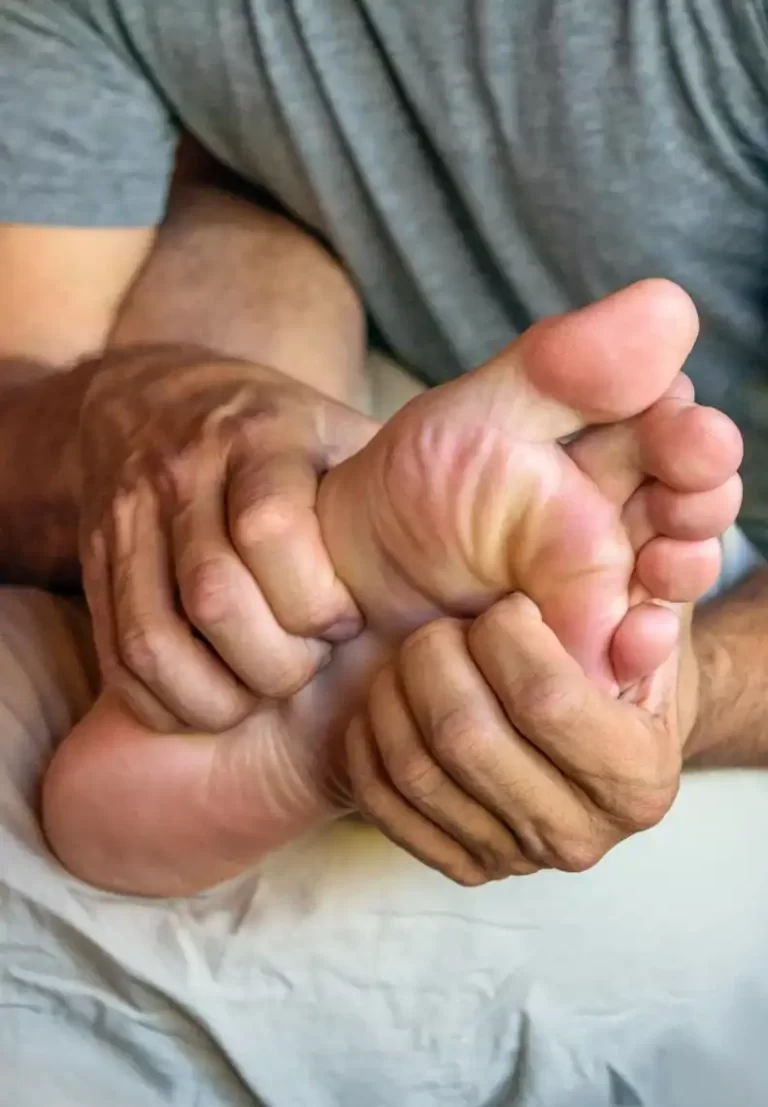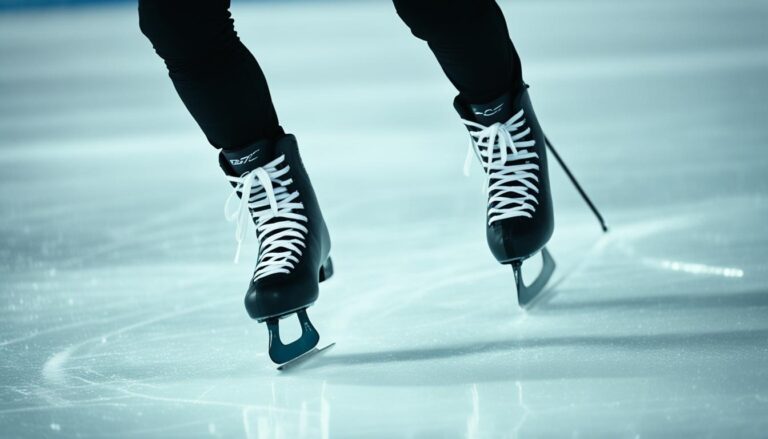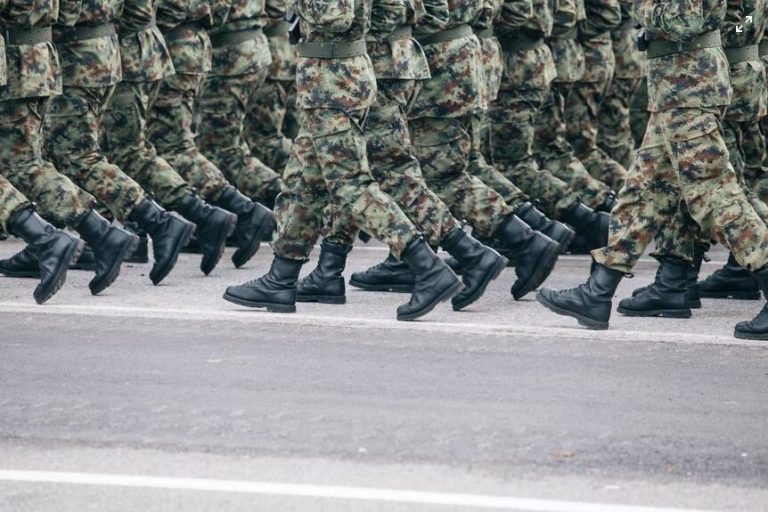Supination with Flat Feet: Causes, Symptoms & Treatment
Feel like your feet always roll outward, making balance tough? You might have supination with flat feet. But what ties these foot issues, and how can you deal with them? We’ll explore supination with flat feet to clear things up.
Supination is when the foot rolls outward during movement, and flat feet lack proper arch support. They team up to cause foot pain, ankle wobbles, and sometimes knee and hip troubles. Learning about these issues helps you take charge of your foot health and find ways to feel better.
Key Takeaways
- Supination is the outward rolling of the foot, while flat feet are characterized by a lack of arch support.
- The combination of supination and flat feet can lead to a range of foot-related issues, including pain, instability, and even problems in the knees and hips.
- Identifying the underlying causes, such as overpronation and structural foot deformities, is crucial for effective treatment.
- Treatment options include orthotic devices, proper footwear, and targeted physical therapy exercises.
- Preventative measures like maintaining a healthy weight and strengthening the feet can help mitigate the development or worsening of supination with flat feet.
Understanding Supination with Flat Feet
It’s key to know what supination is when talking about foot issues, especially with flat feet. Supination, or underpronation, is when the foot rolls outward while moving. This is different from pronation, the usual inward roll, common in flat feet.
What is Supination?
Supination means the foot turns outward when you walk. It can stress the ankle, knee, and hip joints more. This might make you less stable, reduce how well you absorb shock, and cause issues like foot pain, sprained ankles, or problems with knees or hips.
People with supination often have high arches. This makes the lower limbs hold even more stress. It can lead to more aches and pains or make injuries more likely.
Flat Feet and Supination: The Connection
Normally, flat feet link to overpronation, not underpronation. But sometimes, flat feet make people turn their feet outward for extra support. This mix can make problems like plantar fasciitis, foot pain, and ankle problems worse.
It’s crucial to understand how supination and flat feet work together. This knowledge is vital for doctors to make plans that fit each person with these issues well.
Causes of Supination with Flat Feet
It’s key to know why supination with flat feet happens. One big cause is overpronation, where the foot rolls too far inside when walking. This makes the foot roll outward to try to stay balanced.
Overpronation and Gait Abnormalities
Overpronation is linked to issues like excessive foot flattening and less shock absorption. This stresses the foot and ankle, causing supination and flat feet. If the foot and ankle have poor muscle strength and flexibility, these problems get worse.
Structural Foot Deformities
Some foot shapes, like high arches, also matter. They change how the foot works, upping the chance of supination and foot problems. These natural foot shapes can be a cause, too.
Muscular Imbalances and Weakness
Muscular issues in the legs play a part, too. If muscles in the foot, ankle, and leg are weak or out of balance, the foot can’t stabilize well. This leads to more supination and issues like foot pain.
Symptoms of Supination with Flat Feet
People with both supination and flat feet face troubling symptoms. These can greatly affect their lives. Recognizing these signs is key to starting the right treatment.
Foot Pain and Discomfort
Feeling ongoing foot pain is a top symptom of supination and flat feet. It often includes pain in the heel, arch, and ball of the foot areas. The position of the foot causes extra stress on the plantar fascia. This leads to inflammation and pain.
Ankle and Knee Problems
Supination and flat feet affect ankle and knee joints too. Issues like ankle wobbliness, sprains, and knee pain can arise. These happen because the body tries to balance, affecting these higher joints more.
Abnormal Shoe Wear Patterns
Odd shoe wear is a clear sign of supination and flat feet. The foot rolling outwards while walking wears down the outer soles quickly. This wears the shoes out unevenly. It’s a clue for doctors checking for this condition.
Diagnosing Supination with Flat Feet
Determining supination with flat feet needs a thorough diagnostic plan. A healthcare pro, like a podiatrist or orthopedic specialist, starts with an in-depth physical look.
Physical Examination
The healthcare provider will really check how your feet are shaped and aligned. They look for pain, check your movements, and see if there are any strange shapes. Figuring out the cause of these problems is key to making a good treatment plan.
Gait Analysis
Watching how you walk or run is a big part of the diagnosis. The provider pays attention to how your feet hit the ground and move. This helps spot why your feet are flat and how your joints and muscles work together.
Imaging Tests
At times, X-rays or MRIs might be used for a closer look at your feet. These tests show if you have high arches, weird joints, or other issues. They help your healthcare team see the hidden reasons for your supination and flat feet.
Putting together the physical check, gait analysis, and images, providers can figure out supination with flat feet. Then, they create a plan that’s just right for you.
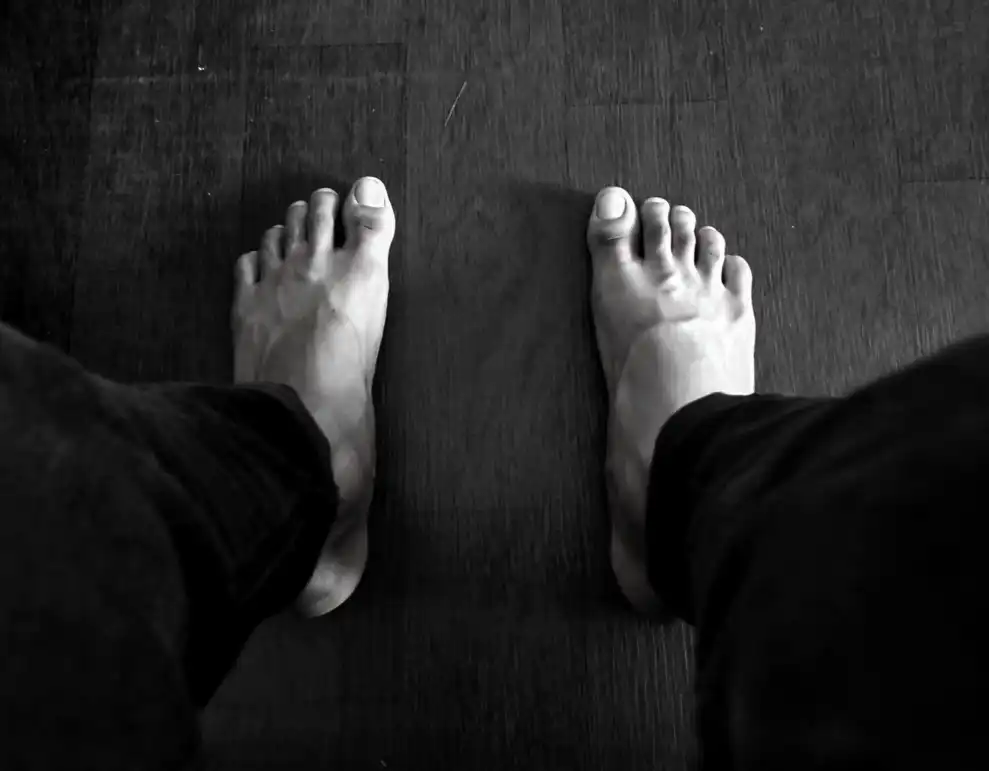
Supination with Flat Feet: Treatment Options
When you have supination with flat feet, there are ways to treat it. Using orthotic devices and arch supports is a key method.
Orthotic Devices and Arch Supports
Orthotics and arch supports are vital for managing this condition. They correct foot alignment, add support, and lessen stress. These tools can also help reduce foot pain, ankle issues, and other problems linked to supination and flat feet.
Proper Footwear
Choosing the right shoes is very important for this issue. It’s best to pick shoes that offer strong arch support, keep your foot from rolling out, and have a stable heel. Shoes made for overpronation are ideal because they usually have special features that help keep your foot in a healthy position while you walk.
Physical Therapy and Exercises
Physical therapy and exercises can also help. A therapist can create a plan to make your feet and legs stronger and more flexible. This might include stretching your calves, strengthening the tiny muscles in your feet, and working on your balance. These exercises can make your feet more steady, improve how you feel where your body is in space, and lower the chance of getting hurt.
Preventing Supination with Flat Feet
It’s important to work on preventing supination with flat feet. By being proactive, individuals can reduce the risk and ease symptoms. This leads to better foot health and well-being.
Maintaining a Healthy Weight
Keeping a healthy weight is key. Extra pounds add stress to the feet, making supination and flat feet worse. Eating well and getting regular exercise helps maintain a healthy weight. This lightens the load on the feet and legs.
Strengthening Exercises
Doing exercises that focus on feet and leg muscles helps a lot. Calf raises, towel curls, and balance board work strengthen these areas. This improves foot and ankle stability, which lowers the risk of supination and its issues.
Wearing Supportive Shoes
Picking the right shoes is crucial. Ones with good arch support, motion control, and heel stability can prevent excessive supination. Getting advice from a healthcare professional or a shoe expert is smart. They can help choose shoes that fit your feet and walking style.
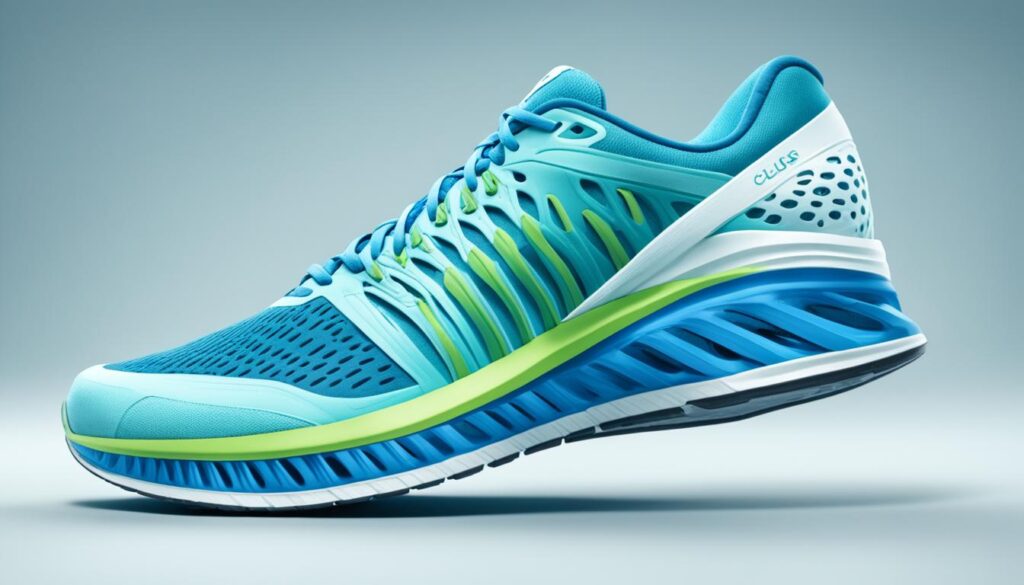
By taking these steps, people with supination and flat feet can protect their foot health. This also lowers the chances of facing problems like foot pain, weak ankles, and plantar fasciitis.
Supination with Flat Feet in Children
Supination can happen in kids with flat feet too, not just adults. It’s key to spot and tackle this issue early. This stops big problems later and makes sure kids’ feet grow right.
Identifying the Condition Early
It’s tricky to see supination in kids early; their feet are still forming. Watch how a child walks for clues, like feet rolling out too much or lacking arch support. Seeing a podiatrist regularly can catch this condition soon and get the right help.
Treatment Options for Children
Helping kids with supination and flat feet needs several steps. Orthotics and arch supports are great for stabilizing and aligning the foot. They ease the pressure on young bones and muscles. Plus, wearing specialized shoes for this issue can offer extra support and softness.
Physical therapy and exercises might also be part of the plan. They target weak muscles to make feet and ankles more stable. This cuts down on future problems.
Treatment will likely change as the child grows. Follow-up visits are very important to adjust the plan as needed. They keep the treatment effective as time goes on.
Supination with Flat Feet and Plantar Fasciitis
We’ve covered how supination and flat feet are linked to plantar fasciitis. This condition brings swelling and pain in the plantar fascia, a band of tissue from the heel to the toes.
Understanding the Connection
People with supination and flat feet face a higher risk of plantar fasciitis. Supination, or the foot rolling outward, stresses the plantar fascia. This leads to pain and swelling. Flat feet worsen the situation by making the plantar fascia work harder for stability.
Managing Plantar Fasciitis
To handle plantar fasciitis with supination and flat feet, we need various methods. This includes using orthotics and arch supports for comfort. It also needs the right footwear for good arch support and cushioning. Physical therapy and stretching can also help.
Gait analysis might show how you walk. Corrective actions could then address the supination and flat feet problems. By using these treatment methods, managing plantar fasciitis can become easier.



